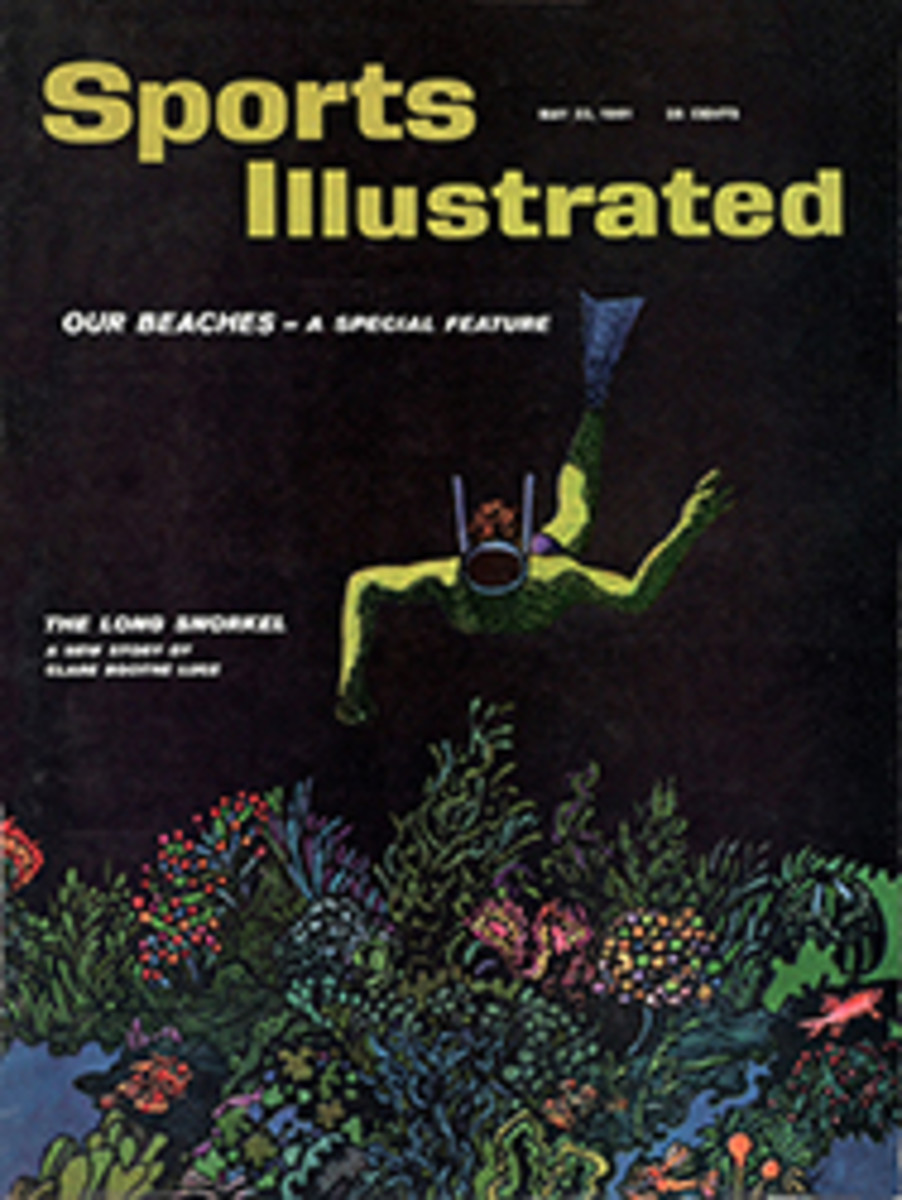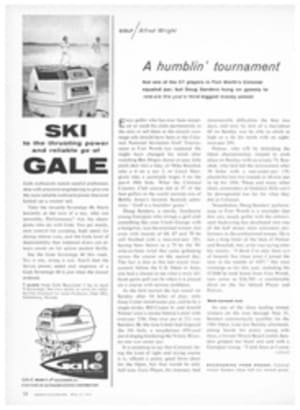
Steam's up on the Reading!
The railroad fan, like the arrowhead collector, is unwilling to let bygones be bygones. Ever since steam locomotives, once running 65,000 strong, fizzled out in the U.S. in the late 1940s, he has clamored persistently for their return, if only on an excursion basis. With other railroad business depressed, many lines have perked up to this call for steam, and today some 15 of them have swept out the sparrows' nests and rekindled the fires under castoff vehicles. For anyone who longs to live again in railroading's romantic past, to breathe deeply of caustic coal smoke puffing passionately from a stack, to tolerate a sifting of soot in his hair and to hear the vaporous melancholy of a steam chime, the trips available are a bargain in nostalgia.
Best of the bargains is offered by the Reading Company, which has been promoting excursions since the fall of 1959. Most of the other lines providing steam engine excursions do so on a charter basis, requiring a guarantee to cover expenses, but the Reading approximates actually scheduled runs. A railroad well known in Pennsylvania and New Jersey and to Monopoly players the world over (who have bought and sold it many times in that famous parlor game), the 128-year-old Reading has polished up two freight-passenger engines it retired a decade ago, and will use them this year on 12 different one-day excursions—or, as it calls them, "Iron Horse Rambles." The response has been astonishing—not only the dedicated railroad buffs have turned up for a ride but so many passengers of more general but no less enthusiastic persuasions that the Rambles are now making money for the Reading on their own. In two years 16,000 people have ridden the Reading under steam.
To make its trains widely available, the Reading customarily shifts the route of the excursions each week, and last week's was a $10 round trip from Jenkintown. Pa. (a Philadelphia suburb) to Gettysburg. Fourteen open-window passenger coaches, borrowed from the commuter division, were hitched up to the engine behind a baggage car thoughtfully provided for those who wanted to keep the magic of their trip forever on tape recorders (a freeloader in an MG chased the train for 45 miles, taping its passage at crossings). A Reading-built Northern Class 4-8-4 engine, railroad jargon for a locomotive with eight drive wheels and four-wheel trucks before and behind, chuffed throatily as the passengers climbed aboard. "It was just such an engine as this," said a Manhattan man who reads railroad timetables for relaxation, "that once pulled the Santa Fe's Super Chief." "And her whistle," added a Philadelphia man who tunes church organs and has worn out two records of steam engine noises, "is pitched in the key of A." "Shucks," said the conductor. "These people know more about trains than we do."
At 7:30 a.m., with a sustained flourish of A-pitched toots, the train clanked out of Jenkintown while the passengers settled down to soak up nostalgia in their various fashions. Of the 700 on board, at least a fourth were frustrated engineers. Costumed in the traditional trainman's paraphernalia of ticking caps, goggles and red bandannas, they leaned professionally (weight on right arm, left hand free for the throttle) out the windows. The most thoroughgoing was one man in bib overalls of blue-and-white ticking who revealed himself as a priest from Boston, known in his parish (he confided) as Father Choo-Choo.
Ivy and daisies
Along with these truly dedicated brethren of the rails were some 300 middle-of-the-track amateurs, best exemplified by two undergraduates from the University of Pennsylvania. "We wear hat, goggles and bandanna, all right," they said, "but mostly it's just part of the act." "Look," added one, "underneath my jacket I've got an Ivy League shirt."
Far to the right of the other two categories were those who had taken the trip just to see the scenery. A group tolerated by the buffs, they are called "daisy pickers" behind their backs, and, as one summed up her day: "It was nice, but what I really enjoyed was seeing this pheasant sitting on a rock near Hershey. He was awfully pretty, just sitting there, just watching the train go by."
A standard procedure on any steam excursion these days is the "high-speed picture stop." The idea is to give the passengers a chance to see and photograph the locomotive in action head-on at some picturesque curve. Last week's site was Mt. Holly Springs, Pa., and while those with cameras calculated f. stops and shutter speeds, the engine backed up for a mile. Then, with considerable drama of smoke, whistle and bell, it lunged back down the track. "Now that," said a Philadelphia lawyer, "was worth $10 by itself. The main reason I came was to show my 4-year-old boy what a steam engine is all about. Maybe the next time he sees one it will have been converted into an ivy planter, but at least he'll know enough to look the other way."
After a tour of the Gettysburg battlefield, the excursionists reboarded. By this time, the litter of lunch scraps was underfoot, the soot on the seats was becoming a little too realistic and the would-be engineers had cricks in their necks. Only the real engineer up front, normally a foreman, had not had enough. Wrenching and manipulating his assorted levers and valves, sweat beading his blackened face, he shouted over the racket: "You think I'm working, don't you? Well, I'll tell you, Mister, I'm having one hell of a good time."
PHOTO
COMING ROUND THE MOUNTAIN, the Reading's old No. 2100 puffs for pictures.
PHOTO
THE COMPLETE ENGINEER, a boy tries to capture a past he's too young to remember.
PHOTO
PRICE OF ENTHUSIASM is paid by novice, treated by Reading doctor for cinder in eye.

